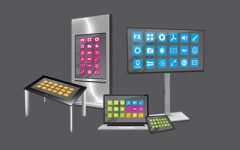There’s an ongoing debate in the applications development world on whether front end or back end testing is the most effective method. However, the discussion shouldn’t be just about where the testing takes place, but rather about the ease of use and effectiveness of the tool. Traditional testing solutions must tunnel into existing application databases to deliver an effective result. Newer technology, such as that in AppLoader for performance testing, now enables testing based on image recognition and is giving us a glimpse of what may be the wave of the future.
Here are five reasons you should think about using an image recognition testing tool.
1. Simple deployment
Most traditional testing tools are protocol dependent and must integrate with application infrastructure, database, and back end processes. This makes the testing process more complex, expensive, and time consuming. An image recognition tool is application neutral and doesn’t need to understand the underlying technology of the target software. With screen capture technology, anything seen on screen can be tested regardless of the application or system environment.
2. Easy to use
With screen capture testing tools, you can develop tests based on what is visible on your screen. There is no need to use plug-ins to enable middleware to see the tools. Users with little to no experience in the specific application being tested can create scripts simply by using screen shots. Programmers can create scripts that affect multiple applications without having to be expert in underlying API’s and database infrastructure. This dramatically reduces the need for a DBA. As a result, the testing process is simplified and testing time is reduced.
3. Versatile
Screen capture tools can work on native Windows applications – something that isn’t possible with most web based testing solutions. You don’t have to be concerned with multiple client combinations or the platform on which the application is running. Image-based tools work with both web-based or on-premises applications. A screen capture solution also allows developers to create scenarios in a test environment and move them quickly to a production platform to speed up implementation.
4. Solves security issues
With a traditional testing solution, highly secure databases are difficult to reach because of built in security protocols. This makes the entire testing process more complicated. Since an image-based solution doesn’t need to interface with the underlying database of an application, it doesn’t have to deal with the problem of firewalls. This can be especially important when it comes to applications for businesses needing to protect sensitive information like those in the financial and medical industries.
5. Tests from a user’s perspective
In traditional testing, the QA team has to be familiar with various complicated back end interfaces and can only estimate how the application will react once it is live. Image-based solutions simulate virtual users’ visual interaction with the application and can better predict end user behavior. You can develop tests to determine how the application will perform under heavy load and in various conditions. QA can configure and deploy thousands of users remotely and get a near-live test of the applications before rolling it out.
How are you handling application testing? Can image-recognition testing help improve your testing environment?
